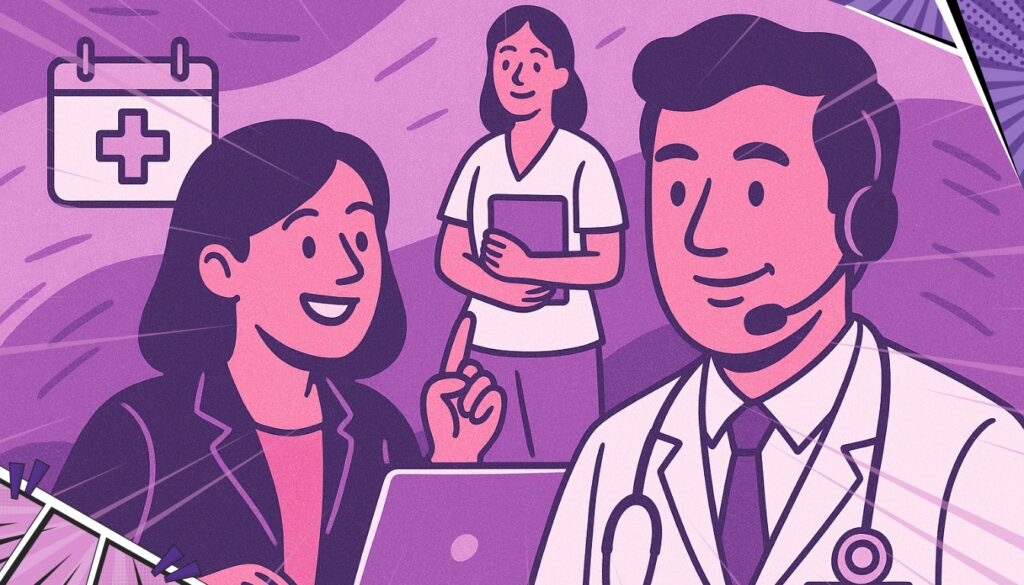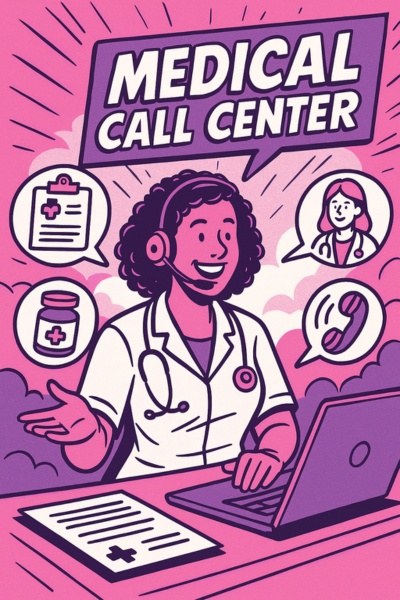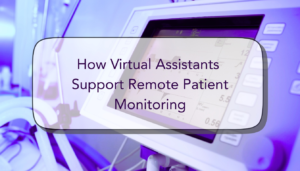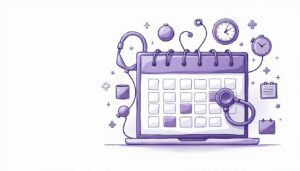How Medical Call Center Outsourcing Improves Patient Communication
19 Aug 2025 By: Maria Rush
Updated
A medical call center isn’t just a phone line. It’s the connection that keeps patients and providers on the same page.

I want you to think about the last time you called your doctor’s office. Did you sit on hold? Did you have to repeat yourself to different people? It’s not a great feeling, right? When you’re not feeling well or you’re worried about a bill, waiting on hold just makes things harder.
For providers, it’s no walk in the park either. Phones ringing, patients waiting, staff stretched thin, it’s a lot. But it doesn’t always have to be this way. Outsourcing to a medical call center can take the pressure off and make sure patients actually get through to someone who can help.
What Is a Medical Call Center?
A medical call center isn’t your typical call center. It’s built for healthcare. The people answering the phones aren’t reading from a generic script. They understand medical language, they know how sensitive these calls can be, and they follow HIPAA rules so patient information stays safe.
Patients call for lots of reasons:
- Booking or canceling appointments
- Asking about prescriptions
- Talking through symptoms before deciding on care
- Sorting out billing or insurance questions
- Getting a follow-up reminder
It’s about making sure patients feel listened to, and not just about checking boxes.
Why Use a Virtual Medical Call Center?
Patients don’t stop needing care when the office closes. They call at night, on weekends, or even during holidays. A virtual medical call center is there when your in-house team can’t be.
Why providers lean on them:
- Always on: 24/7/365 availability.
- Handles the rush: When flu season hits or emergencies pop up, no one is left waiting.
- Language support: Multilingual agents bridge the gap for diverse communities.
- Lower costs: Outsourcing can save up to 30% on overhead.
- Frees up staff: Your team focuses on patients in front of them instead of juggling calls.
How Outsourcing Improves Patient Communication
Outsourcing is about making the patient experience better:
- Shorter waits: Less time on hold means happier patients.
- Consistent answers: No matter who answers, the message is the same.
- Up-to-date records: With EHR and CRM integration, information doesn’t get lost.
- Follow-ups that matter: Appointment reminders and medication check-ins keep patients on track.
Best Practices for Providers Considering Outsourcing
If you’re thinking about outsourcing, here’s what to keep in mind:
- HIPAA compliance isn’t optional: Make sure everything is secure and audited.
- Empathy matters: Patients need to feel cared for, not handled by a script.
- Watch the numbers: Pay attention to first-call resolution, response time, and satisfaction scores.
Trending Now
The global Healthcare Business Process Outsourcing (BPO) market is growing fast. By 2025, it’s expected to hit about USD 352.94 billion. And by 2032, forecasts show it could reach USD 636.95 billion. That’s an annual growth rate of 8.8%.
What’s fueling that growth? A few things stand out:
- The rapid rise of telehealth support services.
- Accelerated digitization across healthcare.
- Rising demand for outsourcing, especially in Asia-Pacific, while North America stays strong thanks to regulatory rigor and demand for advanced solutions.
Working Together With Your In-House Team
Outsourcing a medical call center doesn’t replace your staff but helps them. Your in-house team still builds patient relationships and provides face-to-face care. The call center just picks up the slack after hours, during busy times, and with routine tasks. Think of it as backup that makes your staff’s jobs easier.
Patient Outcomes That Matter
Here’s the part patients notice: fewer missed calls, more reminders, and better follow-ups. That means fewer no-shows and patients who stick to their medication schedules. When communication gets better, so do outcomes.
Looking Ahead
Medical call centers are already changing fast:
- AI and automation: Chatbots and virtual agents cut average handle times by up to 40%, letting staff handle the harder calls.
- Telehealth support: With over 75% of providers offering telehealth, call centers now schedule video visits and help patients get connected.
- Voice analytics: Tools that detect stress in a caller’s voice make sure urgent cases get attention quickly.
- Proactive outreach: Automated reminders and check-ins reduce no-shows and keep patients on track.
This is happening now. And they’re making communication smoother for patients and easier for providers.

Conclusion
A medical call center isn’t just about answering phones. It’s about making sure patients don’t feel ignored and providers don’t feel buried. Outsourcing gives patients reliable support and gives providers the breathing room to focus on care. Everybody wins: patients feel cared for, staff feel supported, and practices run more smoothly.
Want to see how this could work for your practice? Talk to us today and let’s figure out how a medical call center can support your patients.


